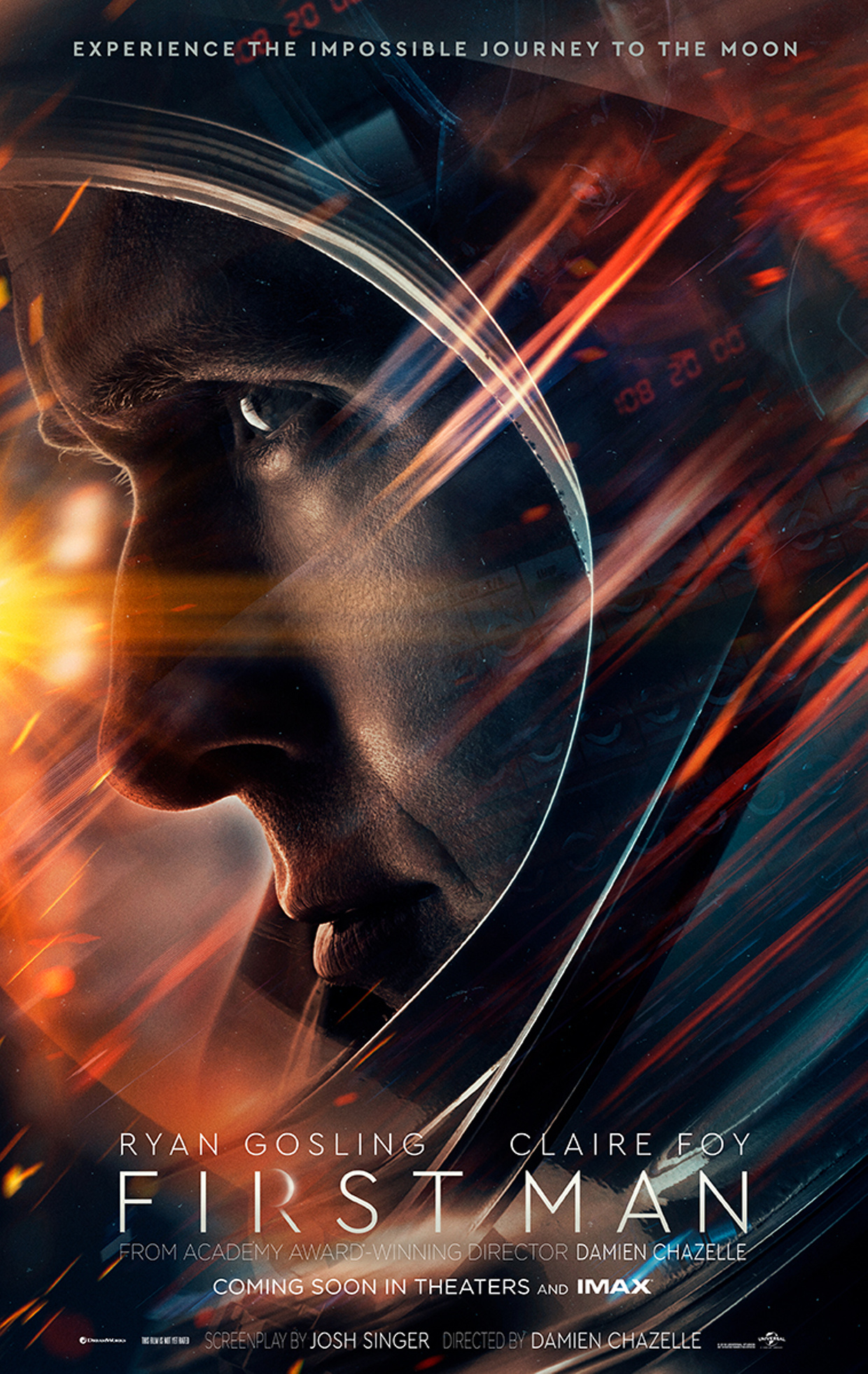Film Review: First Man (2018)



The first thing I noticed that was different about First Man was that it accentuates the uncertainty of the space program. Quite frankly, many of the early astronauts strapped themselves into cockpits and, despite all the training and testing, still had to cross their fingers. The whole thing was experimental, and just about anything could go wrong at any time – and sometimes it did. First Man benefits greatly from the existence of both Tom Wolfe’s book and Philip Kaufman’s movie, The Right Stuff. It’s a very good movie, but I can’t help but wonder if it would be without my prior knowledge of the early days at NASA. The ‘60s space race has always been a fascination of mine, so I’ll admit that director Damien Chazelle would have had to fail pretty hard for me to dislike his new film. I’m so glad he didn’t fail.

Here’s what I mean when I say prior knowledge might help. In one of the best scenes of the movie, Neil Armstrong (Ryan Gosling) is strapped into the Gemini 8 rocket. The scene is shot completely from within the cockpit. No giant rocket fuel flames, no hushed crowd, no worried wife – just Armstrong, his pilot David Scott (Christopher Abbott), the instruments, small windows, and a lot of tension. Alarms sound constantly and it seems they’re about to be shaken out of their skulls. To us, something seems to be going wrong – how could this possibly be the normal procedure? It’s too violent. But to the astronauts, who remain effortlessly calm and collected, it’s just another day at the office. You see, one thing Wolfe’s book nails home is that these men felt no fear – ever. Chazelle’s film doesn’t stress this, but it’s helpful to know.

It’s a remarkable scene, and atypical for a movie about astronauts. We’re in the cockpit with them – not outside, in mission control, or as spectators – but inside for the duration. The usual patriotic theatrics are missing, and what’s left is the procedure of launching into space – and it’s fascinating. By taking away all the fire and fury, Chazelle has left us with something much more interesting and much more human. First Man is unique in this way – it’s about the people involved more than the events they participated in. This also allows for the film’s core to be centered on emotion rather than tension or the “Houston, we have a problem” syndrome. We all know that Armstrong walks on the moon at the end, but what he does while there is the true essence of the movie. Whether based in fact or not, there’s no denying it’s an emotional scene, one made possible by the successful characterizations up to that point.

Gosling delivers the soft-spoken Armstrong with care and finesse, but it’s Claire Foy as his wife Janet who really shines. Where Gosling is reserved and introverted, Foy rages like a quiet storm, both proud and resentful of her husband all at once. She conveys what it was like to be the wife of an astronaut – the fear, the anger, the abandonment, and the need to hide all of that in front of the press – better than anyone since Veronica Cartwright in The Right Stuff. What the men of the space program achieved is amazing, but what the women behind them endured had to be unbearable. Foy makes us understand this with intensity, but also compassion.

I wrote in my notes as the film started, “Prediction: The Right Stuff is better.” Is it? In some ways yes, but in others, hell no. The two films are apples and oranges. Yes, they’re both about the space program during its infancy, but beyond that – both in style and purpose – they couldn’t be more different. First Man – even with its occasional cinematography hiccups – has emotion and procedure at its core. The machismo is balanced by a strong woman and it’s not a propaganda piece. I’m so glad it’s so good.
